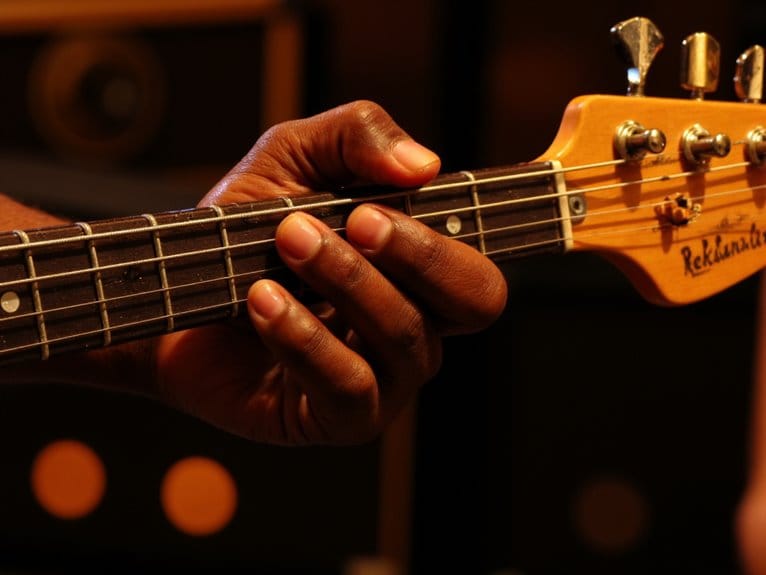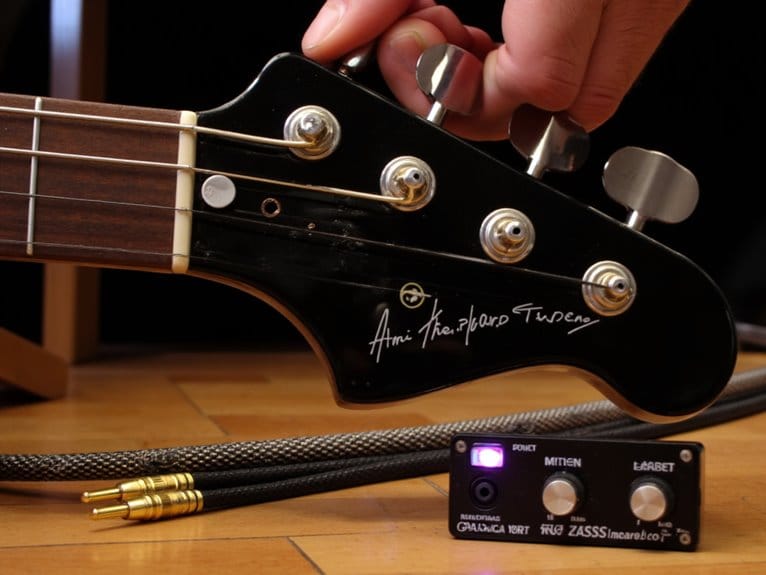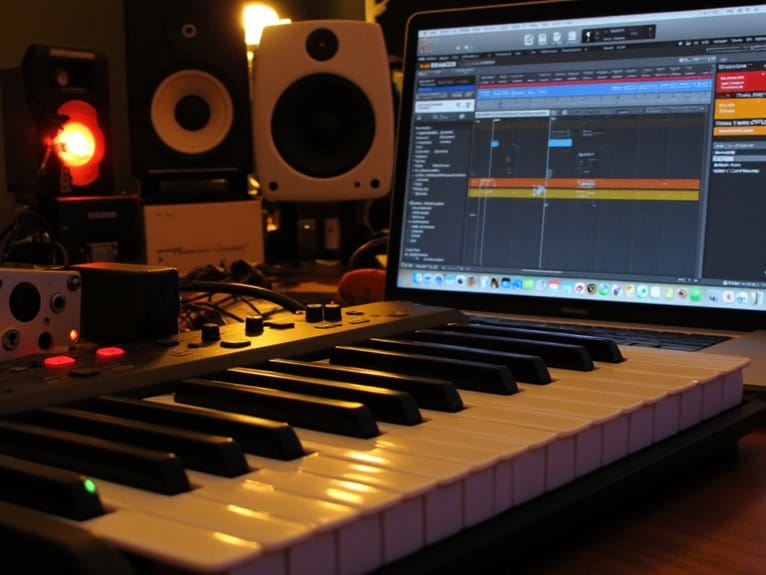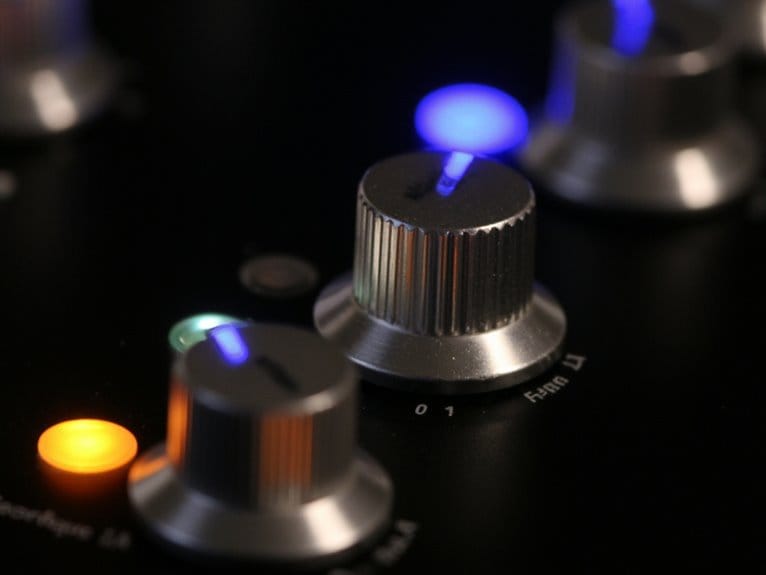Reggae Bass: The Art of Space and Timing
You’ll master reggae bass by embracing what you don’t play rather than cramming every beat with notes, since the genre’s signature groove emerges from deliberately placing bass notes slightly behind the metrical pulse while strategically leaving silence on strong downbeats. This creates essential tension through palm-muted rests that allow the rhythm to breathe, while your bass anchors chord roots and fifths as the guitar chops upbeat patterns in complementary sonic territory. Perfect timing coordination between these sparse, syncopated patterns transforms simple basslines into hypnotic foundations that define reggae’s relaxed yet precise pocket feel, and understanding these foundational principles opens doors to deeper groove mastery.
We are supported by our audience. When you purchase through links on our site, we may earn an affiliate commission, at no extra cost for you. Learn more.
Notable Insights
- Reggae bass emphasizes playing slightly behind the beat, creating a relaxed, laid-back feel characteristic of the genre.
- Strategic silence on strong beats is crucial, with deliberate gaps creating essential tension and groove dynamics.
- Sparse basslines with rhythmic contrast between played notes and silence are more powerful than busy patterns.
- Bass and guitar create rhythmic conversation, with bass anchoring downbeats while guitar chops on upbeats.
- Precise yet relaxed timing creates the essential pocket feel, making space as critical as the notes played.
The Rhythmic Foundation: Playing Behind the Beat
The heartbeat of reggae lies not in what you play, but in how you *don’t* play it-at least not exactly when you’re supposed to. When you master playing behind the beat, you’re deliberately placing your bass notes slightly after the metrical beat, creating that signature relaxed feel that makes reggae unmistakable.
This isn’t sloppy timing-it’s precision disguised as casualness, requiring you to maintain perfect internal pulse while executing intentional delays. Your bass lines complement the drums’ emphasis on beats two and four, entering just after these hits to establish rhythmic cohesion.
The result is a gentle push-and-pull dynamic that creates space for other instruments while maintaining that laid-back groove that distinguishes reggae from every other genre.
Strategic Silence: Using Rests to Create Groove
Silence speaks louder than words in reggae bass playing, where what you don’t play becomes just as important as what you do.
Strategic rests create essential tension and release, establishing groove dynamics that make your basslines breathe naturally. When you leave deliberate gaps on strong beats, particularly the downbeat, you’re creating syncopation that defines reggae’s signature feel.
Strategic rests and deliberate gaps on strong beats create the syncopated breathing that gives reggae bass its unmistakable groove dynamics.
These pauses allow drums, keys, and guitar to shine while preventing rhythmic oversaturation. Use palm muting techniques to articulate clean rests, eliminating unwanted string noise that muddies your mix.
The rhythmic contrast between played notes and silence enhances overall groove impact, making sparse patterns more powerful than busy ones. Master this balance, and you’ll discover how strategic silence transforms ordinary basslines into compelling, dynamic foundations.
Instrumental Interplay: Bass and Guitar Coordination
When bass and guitar lock into reggae’s characteristic interplay, they create a rhythmic conversation that’s both sophisticated and deceptively simple, with each instrument occupying distinct sonic territories that complement rather than compete.
Your bass anchors the groove on downbeats while guitar delivers sharp upbeat chops, establishing a melodic dialogue that defines reggae’s signature bounce.
You’ll outline chord roots and fifths while guitar adds colorful extensions, creating harmonic balance through strategic note placement and intentional rests.
This call-and-response phrasing prevents frequency masking, allowing each instrument’s tone to breathe clearly.
Your timing must be precise yet relaxed, with both players maintaining that vital “pocket” feel.
The result is a hypnotic groove where space becomes as important as the notes themselves.
On a final note
You’ve discovered that reggae bass isn’t about flashy fills or complex runs-it’s about restraint, pocket, and knowing when not to play. When you master the art of playing behind the beat, embrace those strategic silences, and lock in with your guitarist’s skank, you’re creating something bigger than notes. That’s the beauty I’ve found in reggae: less truly becomes more, and space becomes your most powerful tool.






